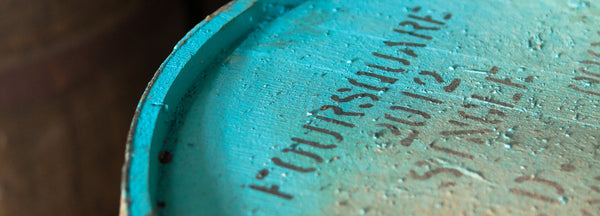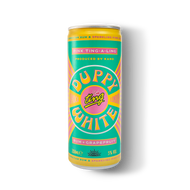The World of Rum And How It's Made
Hi there Duppies,
We are here and ready to delve deep into the world of rum making and explore how the amazing liquid that we know and love is really made. Rum itself has been a beloved spirit for thousands of years, but the process involved in it's making is still largely unknown.
So how is rum made?
Rum is produced from Sugar Cane, a plant found in hot climates, originating from Papa New Guinea and then transported and cultivated around the world. There are many varieties depending on the region in which it's grown and can take up to two years to get to the right level of maturity that allows sugar to be extracted from it.
In the Caribbean, the cane is cut just once a year and usually after 6 years another crop is planted in it's place to reintroduce nutrients into the soil. Once the cane is ready for harvest, it is burnt, cut using weilding machetes, milled and then the sugar extracted.
Fun fact: In Jamaica, cutters leave a few canes out in the field, shaping them like scarecrows to ward of the mischievous duppies.
The cane is chopped and crushed to extract the juice, which is then boiled to form a sugar syrup. This syrup is then boiled, cooled and spun several times to produce molasses.
Rum can be made by distilling the liquid from fresh sugar cane juice - this is what the French call 'Rhum Agricole'. But majority of rums are made from molasses.
The molasses is fermented with water and yeast to produce a 'wash' which is then distilled into rum.

Types of Rum:
Rum can be described as light or heavy depending on the amount of flavour components known as 'esters', the levels of which depend on the length of fermentation and distillation. The less flavour components, the lighter the rum, and vice versa.
Light rums tend to come from former Spanish colonies like Cuba, Dominican Republic, Puerto Rico and Venezuela. Light rums generally have very little flavor or sweetness and are sometimes filtered after aging to remove any colour; their mild flavour making them popular for use in a variety of cocktails.
Heavier rums tend to originate from former French or English colonies like Jamaica, Haiti, Barbados and Martinique. Dark rums are usually made from molasses and are aged for a long time in heavily charred barrels, which give them their potent flavour.
Pot vs Colum Still:
Pot stills use single distillation and are usually made from copper. They often have a bulbous base and a swan neck tube that helps to condense the alcohol. Column stills, however, use continuous distillation and act as a series of pot stills. The still is filled with 'the wash', which is then boiled to ensure the toxic compounds are evaporated to leave the BEST part, the rum.

Ageing:
The Ageing process is what determines the colour of the rum. Oak barrels (which are used to age The Duppy Share) can contribute to not only the look of the rum, but the taste too, as they are often used beforehand to age other spirits like Bourbon. The casks are charred, caramelising the natural sugars in the wood and releasing vanillins .This is what gives The Duppy Share Aged it's extra sweetness and banging flavour.
Blending:
Blending is the final part of the journey and can combine rums of various different ages, origins and stills. Juices, flavourings, sugars and spices can be added to enhance the flavour of the rum and bring out it's different undertones.
Our Aged Rum is a blend of a bold and flavourful 3-year old Jamaican rum from the Worthy Park distillery; and a smooth, buttery 5-year-old Barbadian rum from the Foursquare distillery.
Our Spiced Rum is a 2 year old Jamaican pot still rum from the Worthy Park distillery. It has added natural botanicals like pineapple, grapefruit, orange and basil; as well as extra spices like kola nut, ginger, nutmeg, vanilla and clove for greater depth of flavour.
There you have it Duppies, a brief overview of the wonderful world of rum. Be sure to check our our rums online, now you know all about how they are made. Enjoy and don't forget to share the Rum Love on Instagram and Facebook using @theduppyshare.






